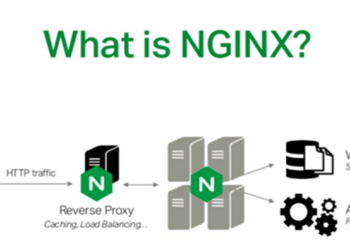Managing a server, whether a dedicated machine, a Virtual Private Server (VPS), or a cloud instance, is a critical responsibility. A well-managed server ensures high availability, strong security, and optimal performance for the applications and websites it hosts. For beginners, the task can seem daunting, but by focusing on core principlessecurity, stability, and monitoring you can establish a reliable and robust hosting environment. This comprehensive guide details the essential best practices for successful server management.
I. Foundational Security Measures
Security is not a feature; it’s a continuous process. Servers are constantly probed by malicious actors, making immediate and ongoing security setup non-negotiable.
A. Initial Setup and User Hardening
Securing the server starts before any application is installed.
A. Never Use Root for Daily Tasks: The root user has unlimited power. Logging in directly as root for regular operations is a major security risk. Always create a Standard User Account with a strong, complex password.
B. Implement Sudo Privileges: Configure the standard user to use the sudo command for administrative tasks. This requires the user to explicitly authenticate for elevated privileges, providing an important layer of protection.
C. Disable Remote Root Login: Edit the Secure Shell (SSH) configuration file to explicitly prevent anyone from logging in as the root user directly via SSH. This forces all administrators to use their standard accounts first.
D. Change the Default SSH Port: Most automated attacks target the default SSH port (22). Changing this port to a non-standard, higher number reduces automated login attempts and noise in your logs.
B. Firewall Configuration (IPTables/UFW)
A firewall is the server’s primary gatekeeper, controlling all incoming and outgoing network traffic.
A. Deny All by Default: Set the default policy to deny all incoming connections. This is the safest baseline.
B. Open Only Necessary Ports: Explicitly allow access only to the ports required for your services (e.g., port 80/443 for web traffic, your new custom SSH port, and any specific application ports).
C. Use Uncomplicated Firewall (UFW): For Linux beginners, UFW is a simpler, front-end interface to manage the more complex iptables rules, making configuration significantly easier.
II. System Stability and Software Management
A server’s ability to remain online and perform reliably depends heavily on how its software and operating system (OS) are maintained.
A. Regular Updates and Patching
Software patches often contain critical security fixes and performance improvements. Neglecting updates is the fastest way to invite vulnerabilities.
A. Understand Your OS Lifecycle: Know when your Linux distribution (e.g., Ubuntu LTS, CentOS Stream) reaches its End-of-Life (EOL). Running an unsupported OS means no more security patches.
B. Implement Automatic Security Updates: Configure the OS to automatically download and install critical security patches. While manual review is best, automation ensures you don’t miss urgent fixes.
C. Test Updates on a Staging Environment: Before applying major kernel or application updates to a production server, test them on a separate staging environment to catch potential conflicts or service disruptions.

B. Strategic Application Management
Keep the server environment clean and streamlined.
A. Only Install What is Needed: Every installed package or service represents a potential vulnerability or resource drain. Audit your server and remove any unnecessary software.
B. Configure Proper Logging: Ensure that services like the web server (Apache/Nginx), database (MySQL/PostgreSQL), and the operating system are generating useful logs. These logs are crucial for troubleshooting and security analysis.
C. Time Synchronization: Use the Network Time Protocol (NTP) to ensure your server’s clock is accurately synchronized. Accurate time is essential for log correlation, security protocol (like Kerberos), and correct transaction timestamps.
III. Monitoring, Backups, and Disaster Recovery
Even the best-managed servers can fail. Proactive monitoring and a solid backup strategy are the ultimate safeguards against downtime and data loss.
A. Proactive Server Monitoring
Monitoring allows you to spot issues (e.g., high CPU usage, low disk space) before they cause a service failure.
A. Resource Utilization: Monitor key resources: CPU Load, RAM Usage, and Disk I/O. Setting thresholds (e.g., if CPU load is consistently above 80%) allows you to receive alerts before performance degrades noticeably.
B. Service Status Checks: Use monitoring tools to verify that essential services (e.g., Web server, database, email) are actively running and responding correctly, not just that the server is online.
C. Log Monitoring: Implement tools to aggregate and analyze server logs for suspicious activity (e.g., repeated failed login attempts, unusual file access) that might indicate an attack.
B. Establishing a Robust Backup Strategy
Data loss is the most common and expensive disaster. A reliable backup is mandatory.
A. Follow the 3-2-1 Rule: Maintain 3 copies of your data (the primary data and two backups), store the copies on 2 different media types (e.g., local disk and tape/cloud), and keep 1 copy offsite (physically or in a remote cloud region).
B. Automate Backups: Manually performing backups is unreliable. Use tools like rsync, Rsnapshot, or cloud provider backup services to automate the process and verify success logs daily.
C. Test Your Restoration Process: A backup that cannot be restored is worthless. Periodically perform a full restoration test on a separate test server to ensure the data is intact and the procedure works correctly.
C. Disaster Recovery Planning
Know exactly what steps to take when a critical failure occurs.
A. Documentation is Key: Document all server configurations, dependency lists, and the step-by-step process for full server rebuild and application deployment.
B. Define Recovery Time Objective (RTO) and Recovery Point Objective (RPO): The RTO is the maximum time your system can be down; the RPO is the maximum acceptable amount of data loss (measured in time). These objectives dictate your backup frequency and hardware redundancy needs.
C. Use Version Control: Store all configuration files (e.g., web server configs, database settings) in a version control system like Git. This ensures you can roll back to a known working state quickly after an issue.
IV. Performance Tuning and Optimization
Efficient management includes optimizing the server’s performance to handle traffic spikes and provide a fast user experience.
A. Web Server Optimization
If you are running a web server (Apache, Nginx), fine-tuning its configuration is crucial.
A. Implement Caching: Use server-side caching mechanisms (e.g., Varnish, Redis, Memcached) to store frequently requested data in memory, significantly reducing database load and response times.
B. Use Compression: Enable Gzip or Brotli compression to reduce the size of files (HTML, CSS, JS) transferred over the network, speeding up page load times.
C. Leverage Content Delivery Networks (CDNs): Use a CDN (e.g., Cloudflare, Akamai) to distribute static assets globally, bringing content physically closer to the end-users and offloading traffic from your main server.
B. Database Health Management
The database is often the bottleneck in any application.
A. Regular Index Maintenance: Ensure your database tables have proper indices. Poorly indexed tables require full table scans, crippling performance.
B. Query Optimization: Use tools to analyze and optimize slow-running SQL queries. Sometimes a minor change in the query structure can yield massive performance gains.
C. Resource Isolation: For high-traffic applications, consider running the Database Server on a separate, dedicated machine to isolate its resource demands from the Web Server.
 Conclusion
Conclusion
Server management for beginners boils down to consistency and discipline. By implementing a strong foundation of security measures (firewall, non-root access), maintaining operational hygiene (regular patching, minimal software), and establishing proactive safeguards (monitoring, 3-2-1 backups), you can transform a complex, intimidating task into a manageable process. The digital health of your organization depends on the stability of your servers; treat them with the continuous, diligent attention they deserve.


 Conclusion
Conclusion




